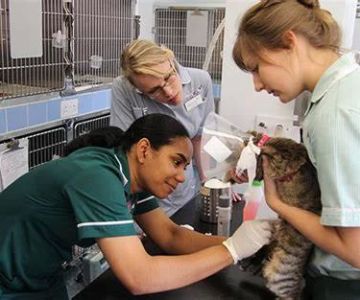- 1-Overview-of-Veterinary-Education-Path
- 2-Undergraduate-Requirements-Before-Vet-School
- 3-Vet-School-Duration-and-Curriculum-Details
- 4-Internships-Residencies-and-Specializations
- 5-Real-Life-Journey-of-a-Veterinarian
- 6-The-Importance-of-Continuing-Education-for-Vets
- 7-Career-Outlook-and-Why-Education-Matters
- 8-Resources-to-Start-Your-Veterinary-Education-Journey
1. Overview of Veterinary Education Path
Understanding how much school a veterinarian needs starts with recognizing the complexity and depth of veterinary medicine as a profession. Becoming a veterinarian requires a multi-step educational journey that involves undergraduate preparation, vet school, and often postgraduate training. This path ensures veterinarians are equipped with the knowledge and skills to care for animals effectively.
2. Undergraduate Requirements Before Vet School
Before entering veterinary school, prospective vets must complete an undergraduate degree, typically in a science-related field such as biology, animal science, or chemistry. This stage usually lasts four years and includes prerequisite courses that are critical for vet school admission. Subjects like anatomy, physiology, and organic chemistry prepare students for the demanding veterinary curriculum ahead.
3. Vet School Duration and Curriculum Details
Veterinary school itself generally lasts four years, culminating in a Doctor of Veterinary Medicine (DVM) degree. The curriculum combines classroom instruction, laboratory work, and clinical rotations. Students study anatomy, pharmacology, pathology, and surgery, gaining hands-on experience diagnosing and treating animals. The last years emphasize clinical practice, where students interact with real patients under supervision.
4. Internships, Residencies, and Specializations
After earning a DVM, many veterinarians pursue internships or residencies for specialized training, particularly if they want to focus on fields like surgery, oncology, or exotic animals. These programs can last one to several years and provide intensive experience, often required for board certification. This additional schooling enhances expertise and career opportunities.
5. Real-Life Journey of a Veterinarian
Dr. Emily’s story is a great example: she completed a bachelor’s degree in biology in 2014, followed by four years at a prestigious veterinary college. After graduation, she completed a one-year internship focusing on small animal surgery before opening her own clinic. Emily’s extensive schooling enabled her to provide advanced care and develop trust within her community. Her journey highlights the dedication and time commitment needed to become a practicing vet.
6. The Importance of Continuing Education for Vets
Veterinary medicine is always evolving with new research and technologies. Continuing education is essential for vets to stay current and maintain licenses. This includes attending workshops, seminars, and online courses regularly throughout their careers. Such lifelong learning ensures vets provide the best care possible for their patients.
7. Career Outlook and Why Education Matters
The veterinary field offers diverse career options—from private practice and research to public health and wildlife care. The level of education directly impacts a veterinarian’s career opportunities and earning potential. Understanding how much school a veterinarian needs helps aspiring vets set realistic goals and prepare adequately for this rewarding profession.
8. Resources to Start Your Veterinary Education Journey
If you’re wondering how much school a veterinarian needs and are ready to begin your path, numerous resources can help. Websites like the American Veterinary Medical Association (AVMA) provide comprehensive guides on admissions, schooling, and career planning. Additionally, exploring products and educational tools on platforms like Scent Snob can support your study environment, enhancing focus and comfort during your long educational journey.
Taking the first step today by researching veterinary education requirements can set you on a fulfilling path to becoming a skilled veterinarian.












